
awesome-llm-security
A curation of awesome tools, documents and projects about LLM Security.
Stars: 777
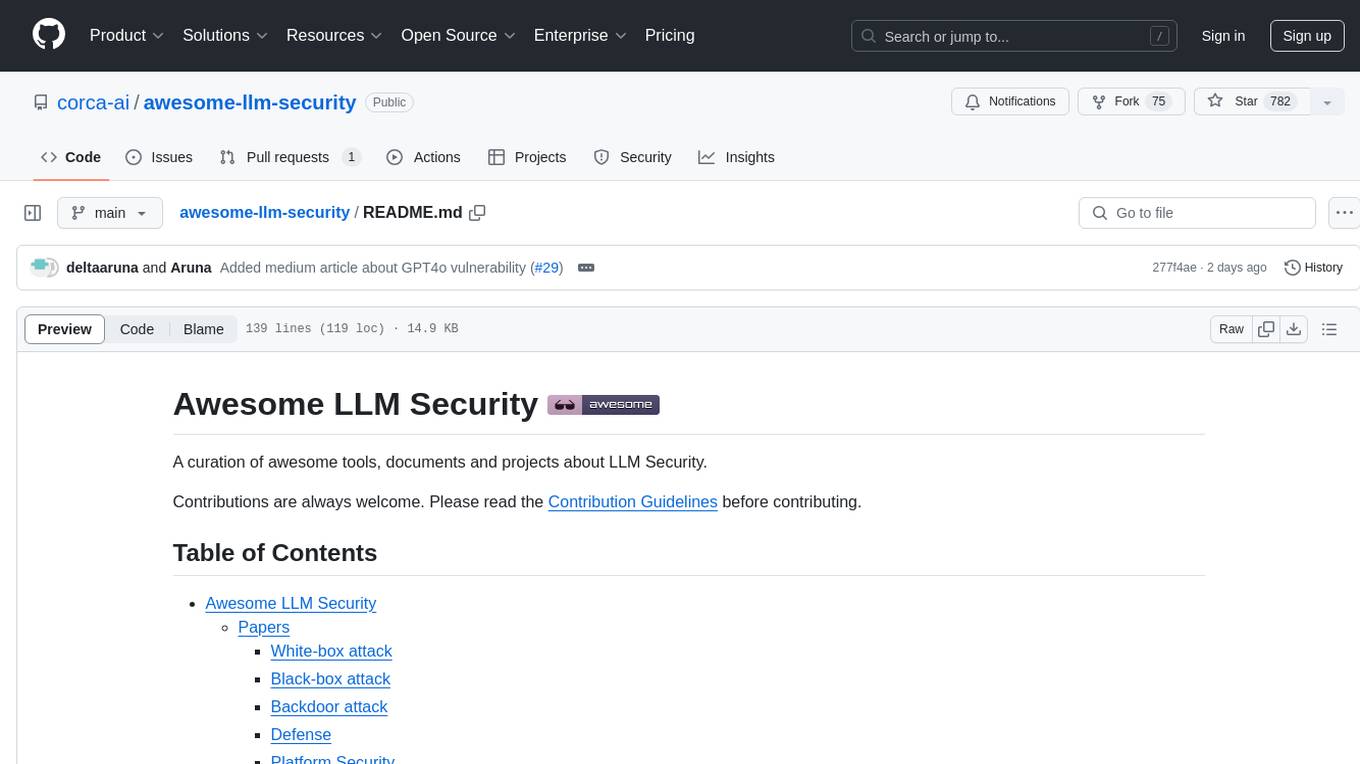
Awesome LLM Security is a curated collection of tools, documents, and projects related to Large Language Model (LLM) security. It covers various aspects of LLM security including white-box, black-box, and backdoor attacks, defense mechanisms, platform security, and surveys. The repository provides resources for researchers and practitioners interested in understanding and safeguarding LLMs against adversarial attacks. It also includes a list of tools specifically designed for testing and enhancing LLM security.
README:
A curation of awesome tools, documents and projects about LLM Security.
Contributions are always welcome. Please read the Contribution Guidelines before contributing.
- "Visual Adversarial Examples Jailbreak Large Language Models", 2023-06, AAAI(Oral) 24,
multi-modal, [paper] [repo] - "Are aligned neural networks adversarially aligned?", 2023-06, NeurIPS(Poster) 23,
multi-modal, [paper] - "(Ab)using Images and Sounds for Indirect Instruction Injection in Multi-Modal LLMs", 2023-07,
multi-modal[paper] - "Universal and Transferable Adversarial Attacks on Aligned Language Models", 2023-07,
transfer, [paper] [repo] [page] - "Jailbreak in pieces: Compositional Adversarial Attacks on Multi-Modal Language Models", 2023-07,
multi-modal, [paper] - "Image Hijacking: Adversarial Images can Control Generative Models at Runtime", 2023-09,
multi-modal, [paper] [repo] [site] - "Weak-to-Strong Jailbreaking on Large Language Models", 2024-04,
token-prob, [paper] [repo]
- "Not what you've signed up for: Compromising Real-World LLM-Integrated Applications with Indirect Prompt Injection", 2023-02, AISec@CCS 23 [paper]
- "Jailbroken: How Does LLM Safety Training Fail?", 2023-07, NeurIPS(Oral) 23, [paper]
- "Latent Jailbreak: A Benchmark for Evaluating Text Safety and Output Robustness of Large Language Models", 2023-07, [paper] [repo]
- "Effective Prompt Extraction from Language Models", 2023-07,
prompt-extraction, [paper] - "Multi-step Jailbreaking Privacy Attacks on ChatGPT", 2023-04, EMNLP 23,
privacy, [paper] - "LLM Censorship: A Machine Learning Challenge or a Computer Security Problem?", 2023-07, [paper]
- "Jailbreaking chatgpt via prompt engineering: An empirical study", 2023-05, [paper]
- "Prompt Injection attack against LLM-integrated Applications", 2023-06, [paper] [repo]
- "MasterKey: Automated Jailbreak Across Multiple Large Language Model Chatbots", 2023-07,
time-side-channel, [paper] - "GPT-4 Is Too Smart To Be Safe: Stealthy Chat with LLMs via Cipher", 2023-08, ICLR 24,
cipher, [paper] [repo] - "Use of LLMs for Illicit Purposes: Threats, Prevention Measures, and Vulnerabilities", 2023-08, [paper]
- "Do-Not-Answer: A Dataset for Evaluating Safeguards in LLMs", 2023-08, [paper] [repo] [dataset]
- "Detecting Language Model Attacks with Perplexity", 2023-08, [paper]
- "Open Sesame! Universal Black Box Jailbreaking of Large Language Models", 2023-09,
gene-algorithm, [paper] - "Fine-tuning Aligned Language Models Compromises Safety, Even When Users Do Not Intend To!", 2023-10, ICLR(oral) 24, [paper] [repo] [site] [dataset]
- "AutoDAN: Generating Stealthy Jailbreak Prompts on Aligned Large Language Models", 2023-10, ICLR(poster) 24,
gene-algorithm,new-criterion, [paper] - "Jailbreak and Guard Aligned Language Models with Only Few In-Context Demonstrations", 2023-10, CoRR 23,
ICL, [paper] - "Multilingual Jailbreak Challenges in Large Language Models", 2023-10, ICLR(poster) 24, [paper] [repo]
- "Scalable and Transferable Black-Box Jailbreaks for Language Models via Persona Modulation", 2023-11, SoLaR(poster) 24, [paper]
- "DeepInception: Hypnotize Large Language Model to Be Jailbreaker", 2023-11, [paper] [repo] [site]
- "A Wolf in Sheep’s Clothing: Generalized Nested Jailbreak Prompts can Fool Large Language Models Easily", 2023-11, NAACL 24, [paper] [repo]
- "AutoDAN: Automatic and Interpretable Adversarial Attacks on Large Language Models", 2023-10, [paper]
- "Language Model Inversion", 2023-11, ICLR(poster) 24, [paper] [repo]
- "An LLM can Fool Itself: A Prompt-Based Adversarial Attack", 2023-10, ICLR(poster) 24, [paper] [repo]
- "GPTFUZZER: Red Teaming Large Language Models with Auto-Generated Jailbreak Prompts", 2023-09, [paper] [repo] [site]
- "Many-shot Jailbreaking", 2024-04, [paper]
- "Rethinking How to Evaluate Language Model Jailbreak", 2024-04, [paper] [repo]
- "BITE: Textual Backdoor Attacks with Iterative Trigger Injection", 2022-05, ACL 23,
defense[paper] - "Prompt as Triggers for Backdoor Attack: Examining the Vulnerability in Language Models", 2023-05, EMNLP 23, [paper]
- "Backdooring Instruction-Tuned Large Language Models with Virtual Prompt Injection", 2023-07, NAACL 24, [paper] [repo] [site]
- "Baseline Defenses for Adversarial Attacks Against Aligned Language Models", 2023-09, [paper] [repo]
- "LLM Self Defense: By Self Examination, LLMs Know They Are Being Tricked", 2023-08, ICLR 24 Tiny Paper,
self-filtered, [paper] [repo] [site] - "Defending Against Alignment-Breaking Attacks via Robustly Aligned LLM", 2023-09,
random-mask-filter, [paper] - "Benchmarking and Defending Against Indirect Prompt Injection Attacks on Large Language Models", 2023-12, [paper] [repo]
- "AutoDefense: Multi-Agent LLM Defense against Jailbreak Attacks", 2024-03, [paper] [repo]
- "Protecting Your LLMs with Information Bottleneck", 2024-04, [paper] [repo]
- "PARDEN, Can You Repeat That? Defending against Jailbreaks via Repetition", 2024-05, ICML 24, [paper] [repo]
- “Adversarial Tuning: Defending Against Jailbreak Attacks for LLMs”, 2024-06, [paper]
- "LLM Platform Security: Applying a Systematic Evaluation Framework to OpenAI’s ChatGPT Plugins", 2023-09, [paper] [repo]
- "Survey of Vulnerabilities in Large Language Models Revealed by Adversarial Attacks", 2023-10, ACL 24, [paper]
- "Security and Privacy Challenges of Large Language Models: A Survey", 2024-02, [paper]
- "Breaking Down the Defenses: A Comparative Survey of Attacks on Large Language Models", 2024-03, [paper]
-
Plexiglass: a security toolbox for testing and safeguarding LLMs
-
PurpleLlama: set of tools to assess and improve LLM security.
-
Rebuff: a self-hardening prompt injection detector
-
Garak: a LLM vulnerability scanner
-
LLMFuzzer: a fuzzing framework for LLMs
-
LLM Guard: a security toolkit for LLM Interactions
-
Vigil: a LLM prompt injection detection toolkit
-
jailbreak-evaluation: an easy-to-use Python package for language model jailbreak evaluation
-
Prompt Fuzzer: the open-source tool to help you harden your GenAI applications
- Hacking Auto-GPT and escaping its docker container
- Prompt Injection Cheat Sheet: How To Manipulate AI Language Models
- Indirect Prompt Injection Threats
- Prompt injection: What’s the worst that can happen?
- OWASP Top 10 for Large Language Model Applications
- PoisonGPT: How we hid a lobotomized LLM on Hugging Face to spread fake news
- ChatGPT Plugins: Data Exfiltration via Images & Cross Plugin Request Forgery
- Jailbreaking GPT-4's code interpreter
- Securing LLM Systems Against Prompt Injection
- The AI Attack Surface Map v1.0
- Adversarial Attacks on LLMs
- How Anyone can Hack ChatGPT - GPT4o
- (0din GenAI Bug Bounty from Mozilla)(https://0din.ai): The 0Day Investigative Network is a bug bounty program focusing on flaws within GenAI models. Vulnerability classes include Prompt Injection, Training Data Poisoning, DoS, and more.
- Gandalf: a prompt injection wargame
- LangChain vulnerable to code injection - CVE-2023-29374
- Jailbreak Chat
- Adversarial Prompting
- Epivolis: a prompt injection aware chatbot designed to mitigate adversarial efforts
- LLM Security Problems at DEFCON31 Quals: the world's top security competition
- PromptBounty.io
- PALLMs (Payloads for Attacking Large Language Models)
- Twitter: @llm_sec
- Blog: LLM Security authored by @llm_sec
- Blog: Embrace The Red
- Blog: Kai's Blog
- Newsletter: AI safety takes
- Newsletter & Blog: Hackstery
For Tasks:
Click tags to check more tools for each tasksFor Jobs:
Alternative AI tools for awesome-llm-security
Similar Open Source Tools

awesome-llm-security
Awesome LLM Security is a curated collection of tools, documents, and projects related to Large Language Model (LLM) security. It covers various aspects of LLM security including white-box, black-box, and backdoor attacks, defense mechanisms, platform security, and surveys. The repository provides resources for researchers and practitioners interested in understanding and safeguarding LLMs against adversarial attacks. It also includes a list of tools specifically designed for testing and enhancing LLM security.
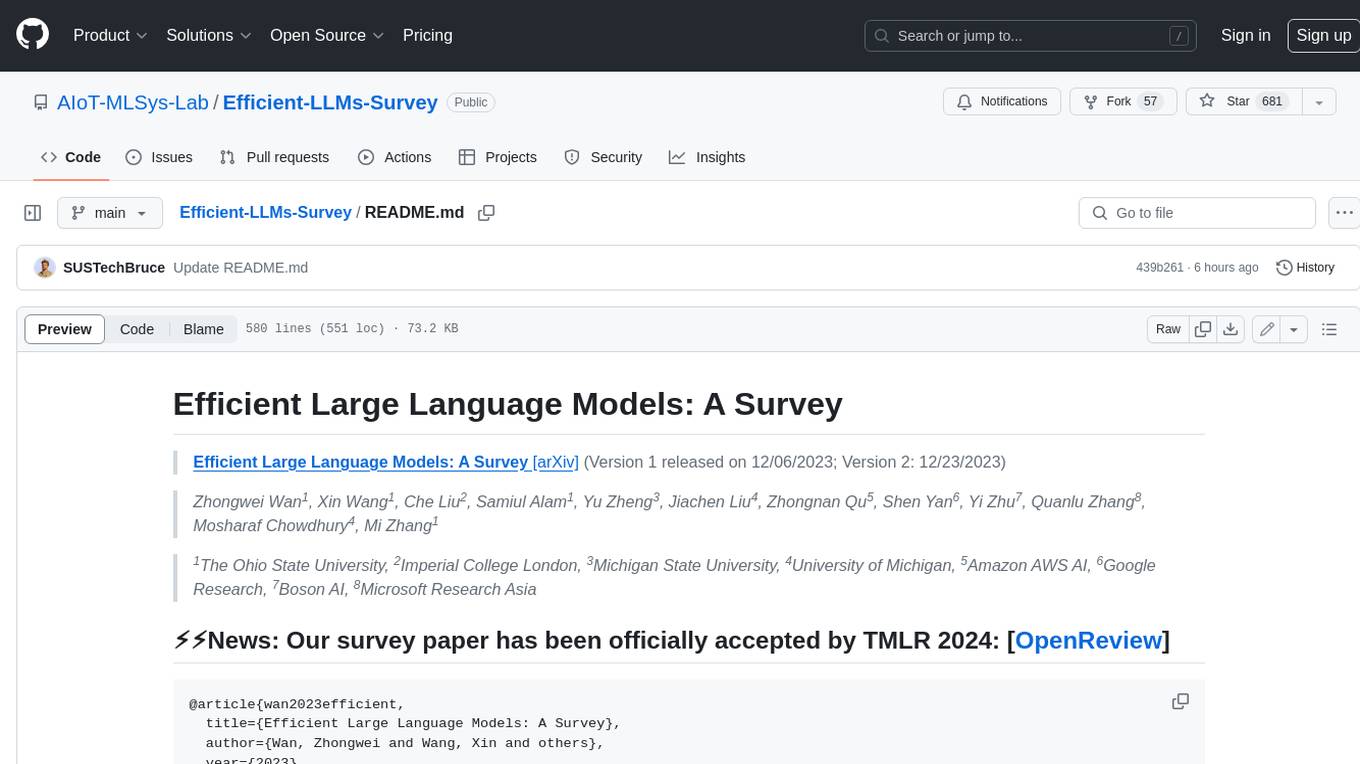
Efficient-LLMs-Survey
This repository provides a systematic and comprehensive review of efficient LLMs research. We organize the literature in a taxonomy consisting of three main categories, covering distinct yet interconnected efficient LLMs topics from **model-centric** , **data-centric** , and **framework-centric** perspective, respectively. We hope our survey and this GitHub repository can serve as valuable resources to help researchers and practitioners gain a systematic understanding of the research developments in efficient LLMs and inspire them to contribute to this important and exciting field.
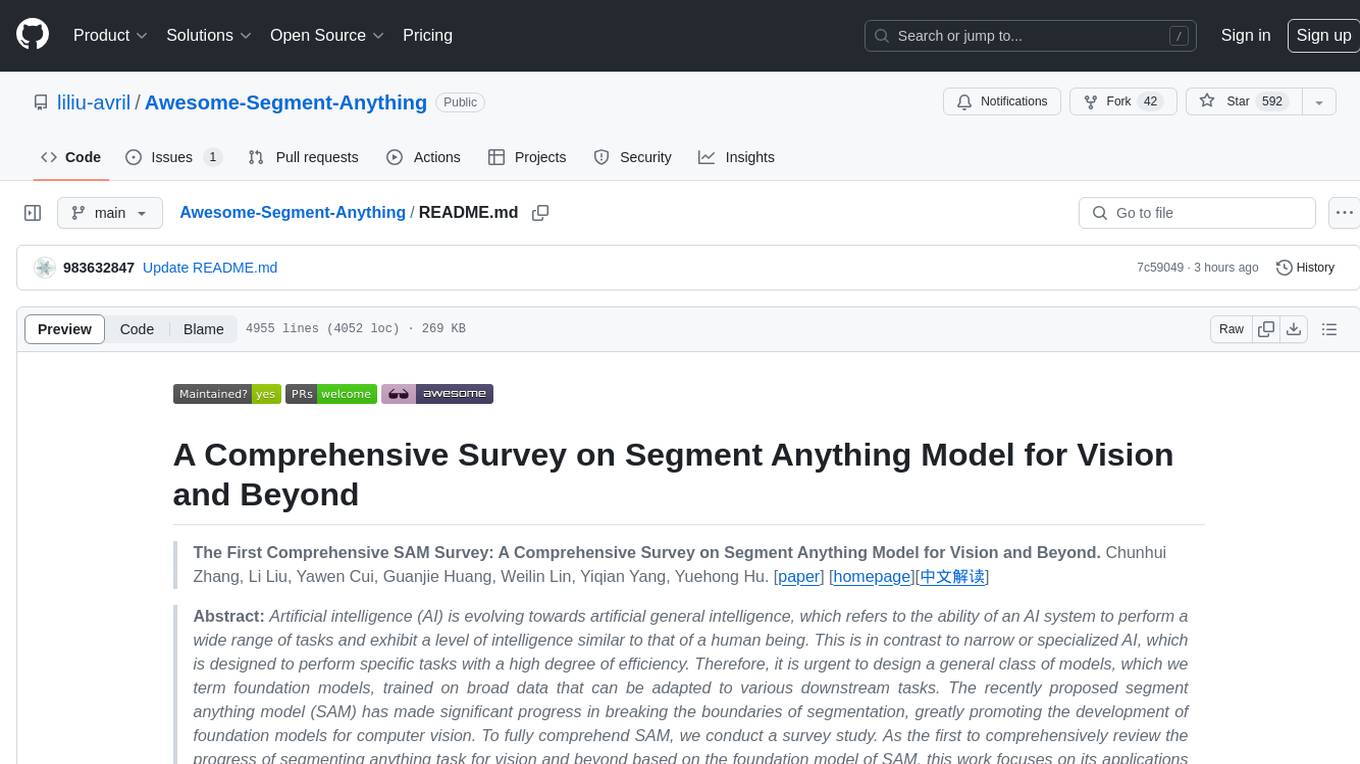
Awesome-Segment-Anything
Awesome-Segment-Anything is a powerful tool for segmenting and extracting information from various types of data. It provides a user-friendly interface to easily define segmentation rules and apply them to text, images, and other data formats. The tool supports both supervised and unsupervised segmentation methods, allowing users to customize the segmentation process based on their specific needs. With its versatile functionality and intuitive design, Awesome-Segment-Anything is ideal for data analysts, researchers, content creators, and anyone looking to efficiently extract valuable insights from complex datasets.
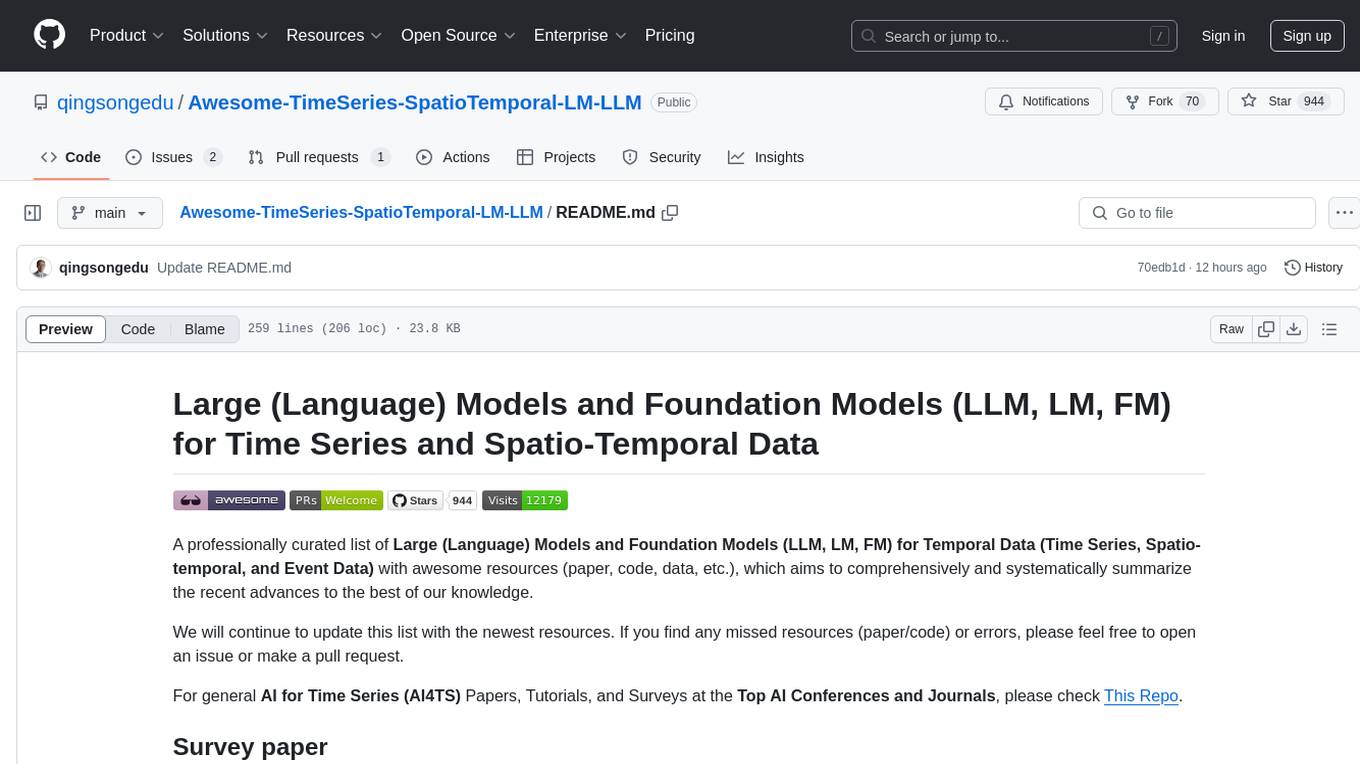
Awesome-TimeSeries-SpatioTemporal-LM-LLM
Awesome-TimeSeries-SpatioTemporal-LM-LLM is a curated list of Large (Language) Models and Foundation Models for Temporal Data, including Time Series, Spatio-temporal, and Event Data. The repository aims to summarize recent advances in Large Models and Foundation Models for Time Series and Spatio-Temporal Data with resources such as papers, code, and data. It covers various applications like General Time Series Analysis, Transportation, Finance, Healthcare, Event Analysis, Climate, Video Data, and more. The repository also includes related resources, surveys, and papers on Large Language Models, Foundation Models, and their applications in AIOps.
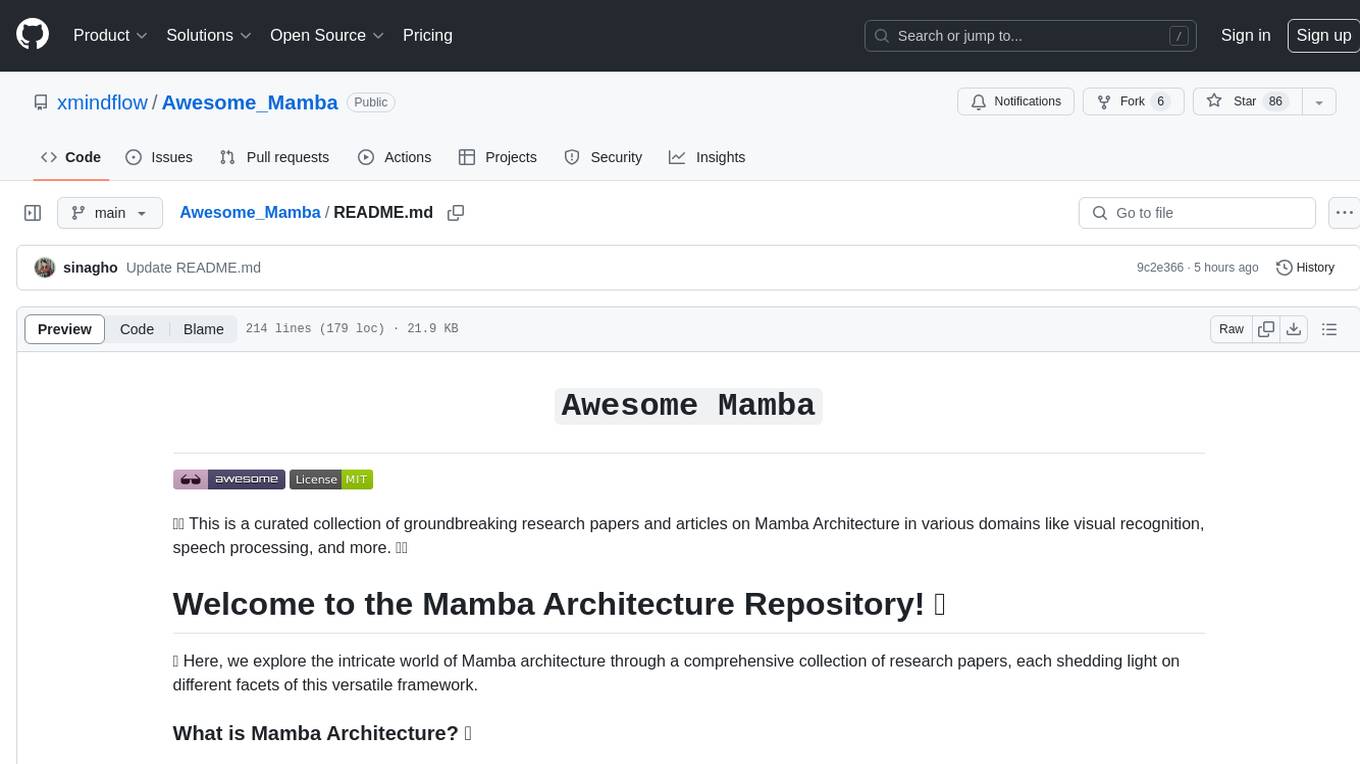
Awesome_Mamba
Awesome Mamba is a curated collection of groundbreaking research papers and articles on Mamba Architecture, a pioneering framework in deep learning known for its selective state spaces and efficiency in processing complex data structures. The repository offers a comprehensive exploration of Mamba architecture through categorized research papers covering various domains like visual recognition, speech processing, remote sensing, video processing, activity recognition, image enhancement, medical imaging, reinforcement learning, natural language processing, 3D recognition, multi-modal understanding, time series analysis, graph neural networks, point cloud analysis, and tabular data handling.
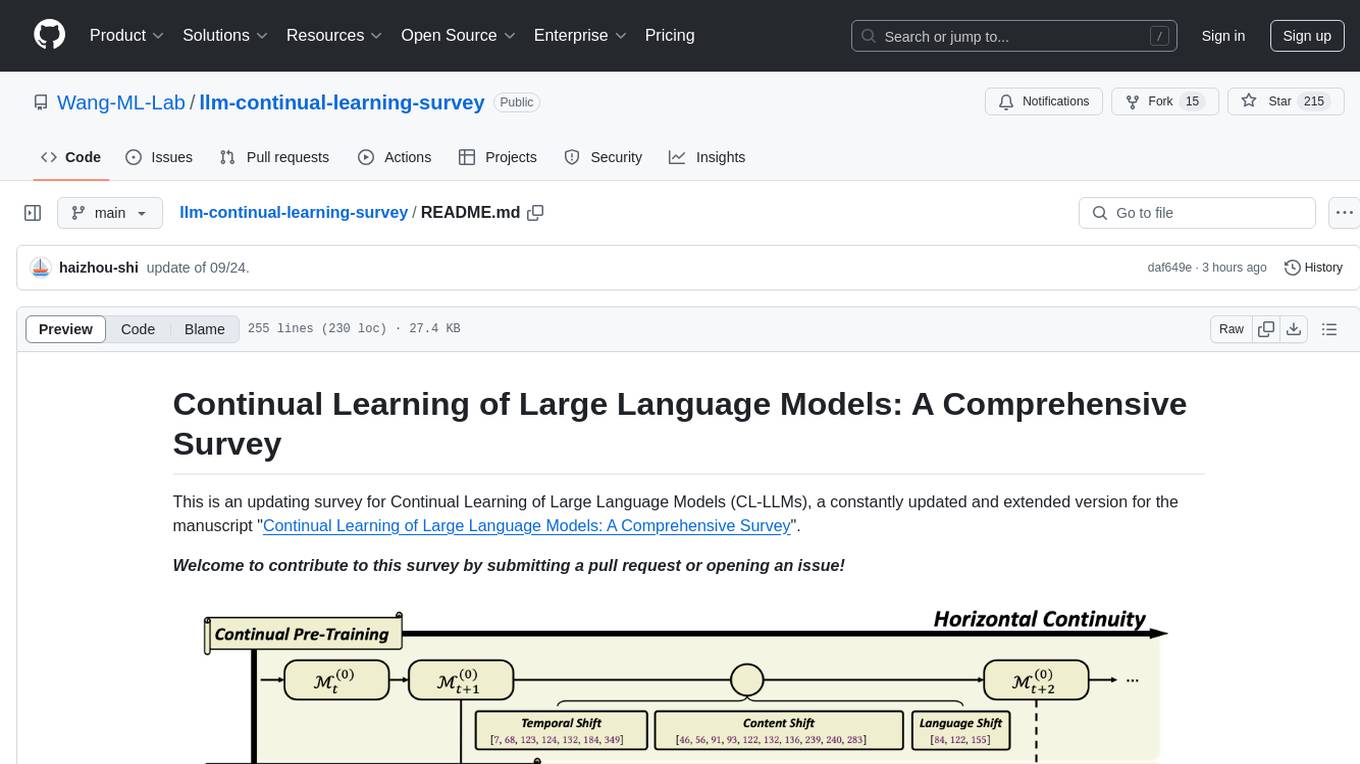
llm-continual-learning-survey
This repository is an updating survey for Continual Learning of Large Language Models (CL-LLMs), providing a comprehensive overview of various aspects related to the continual learning of large language models. It covers topics such as continual pre-training, domain-adaptive pre-training, continual fine-tuning, model refinement, model alignment, multimodal LLMs, and miscellaneous aspects. The survey includes a collection of relevant papers, each focusing on different areas within the field of continual learning of large language models.
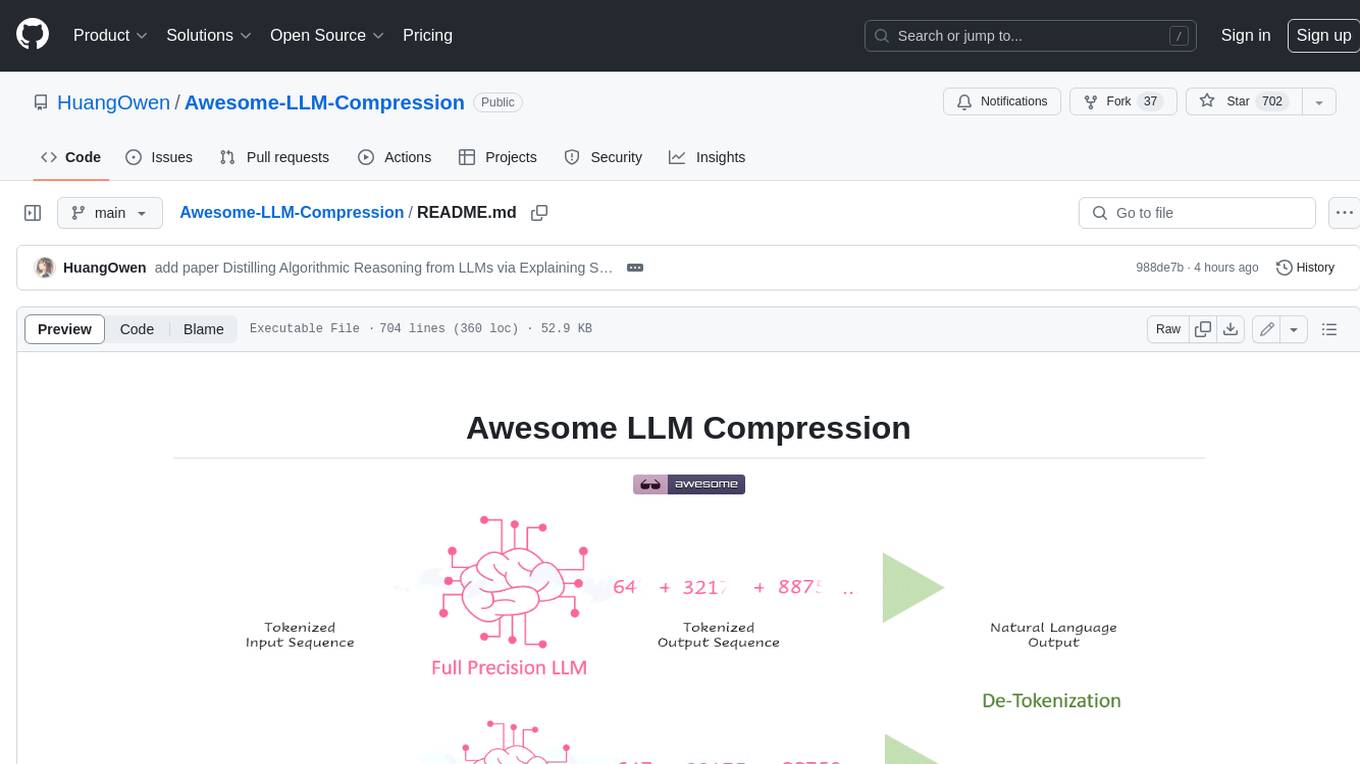
Awesome-LLM-Compression
Awesome LLM compression research papers and tools to accelerate LLM training and inference.
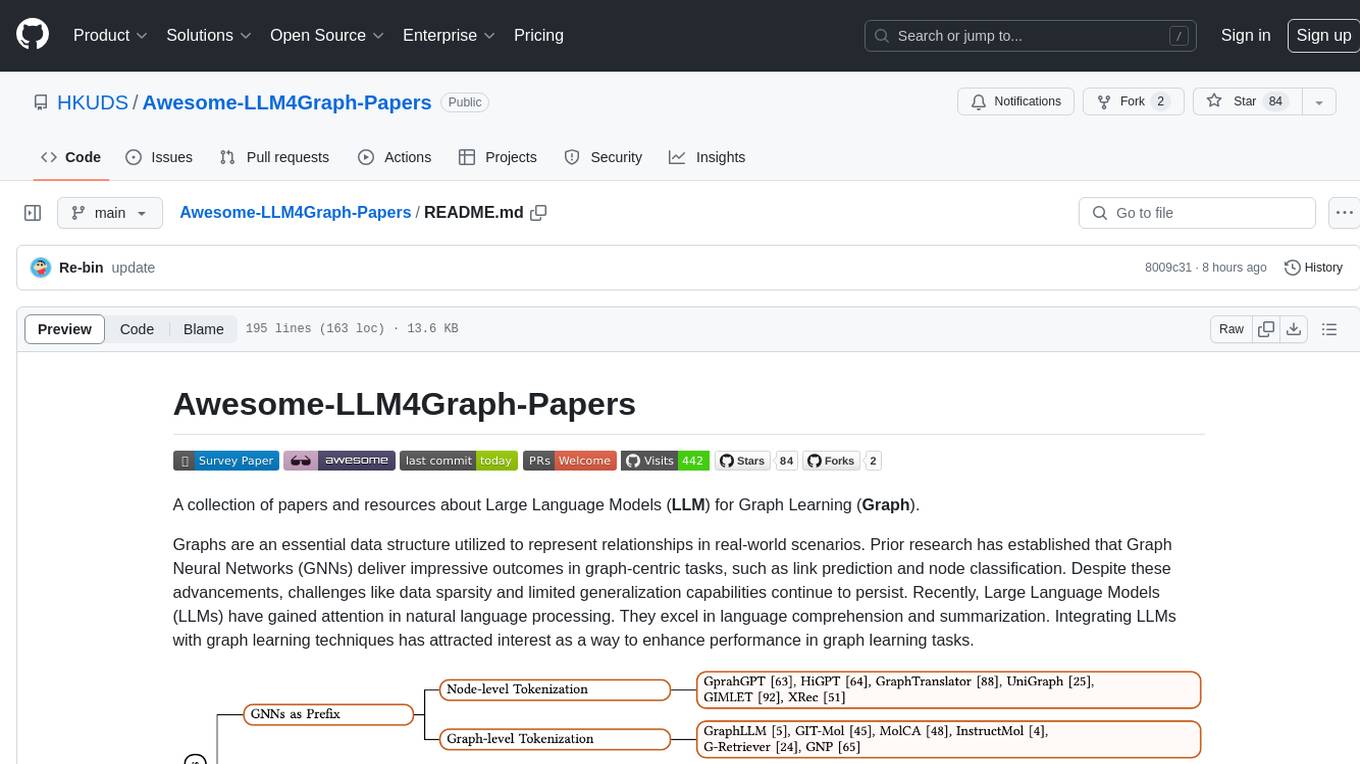
Awesome-LLM4Graph-Papers
A collection of papers and resources about Large Language Models (LLM) for Graph Learning (Graph). Integrating LLMs with graph learning techniques to enhance performance in graph learning tasks. Categorizes approaches based on four primary paradigms and nine secondary-level categories. Valuable for research or practice in self-supervised learning for recommendation systems.
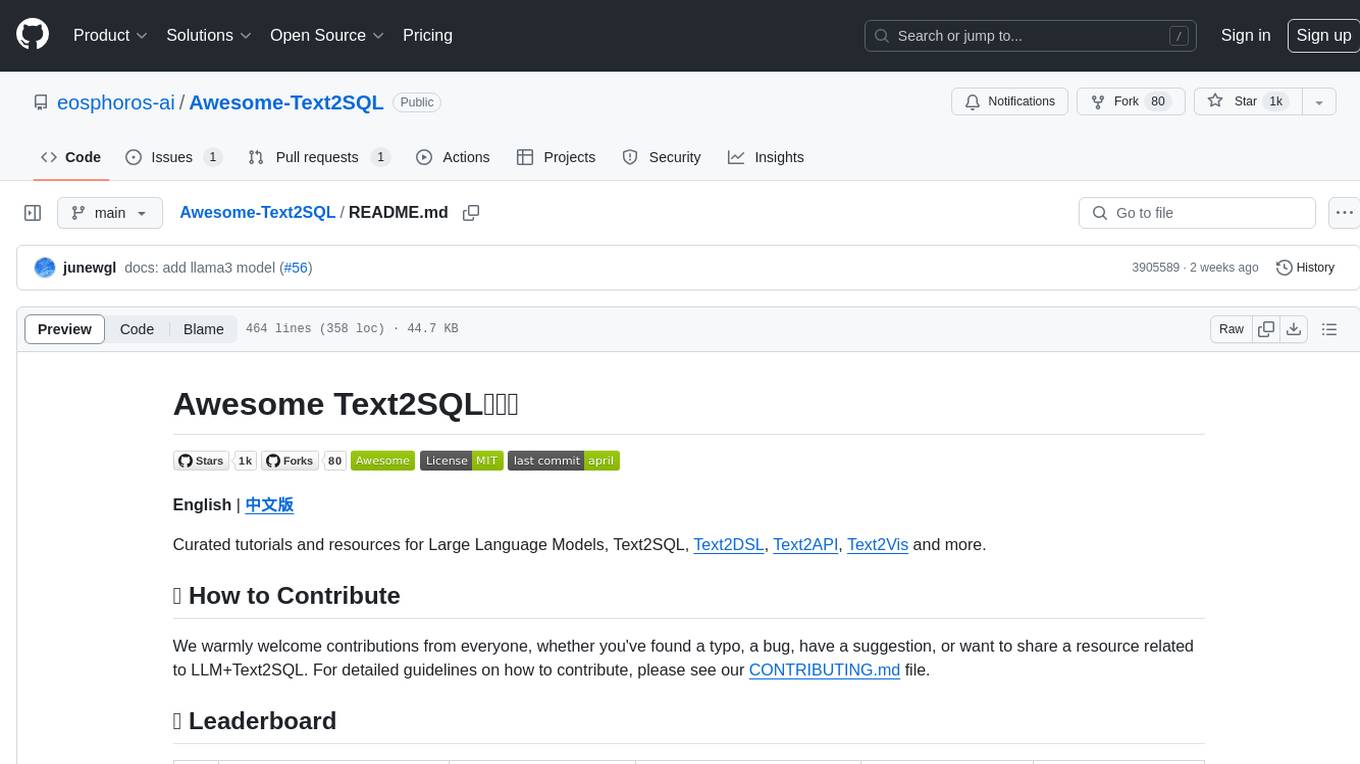
Awesome-Text2SQL
Awesome Text2SQL is a curated repository containing tutorials and resources for Large Language Models, Text2SQL, Text2DSL, Text2API, Text2Vis, and more. It provides guidelines on converting natural language questions into structured SQL queries, with a focus on NL2SQL. The repository includes information on various models, datasets, evaluation metrics, fine-tuning methods, libraries, and practice projects related to Text2SQL. It serves as a comprehensive resource for individuals interested in working with Text2SQL and related technologies.
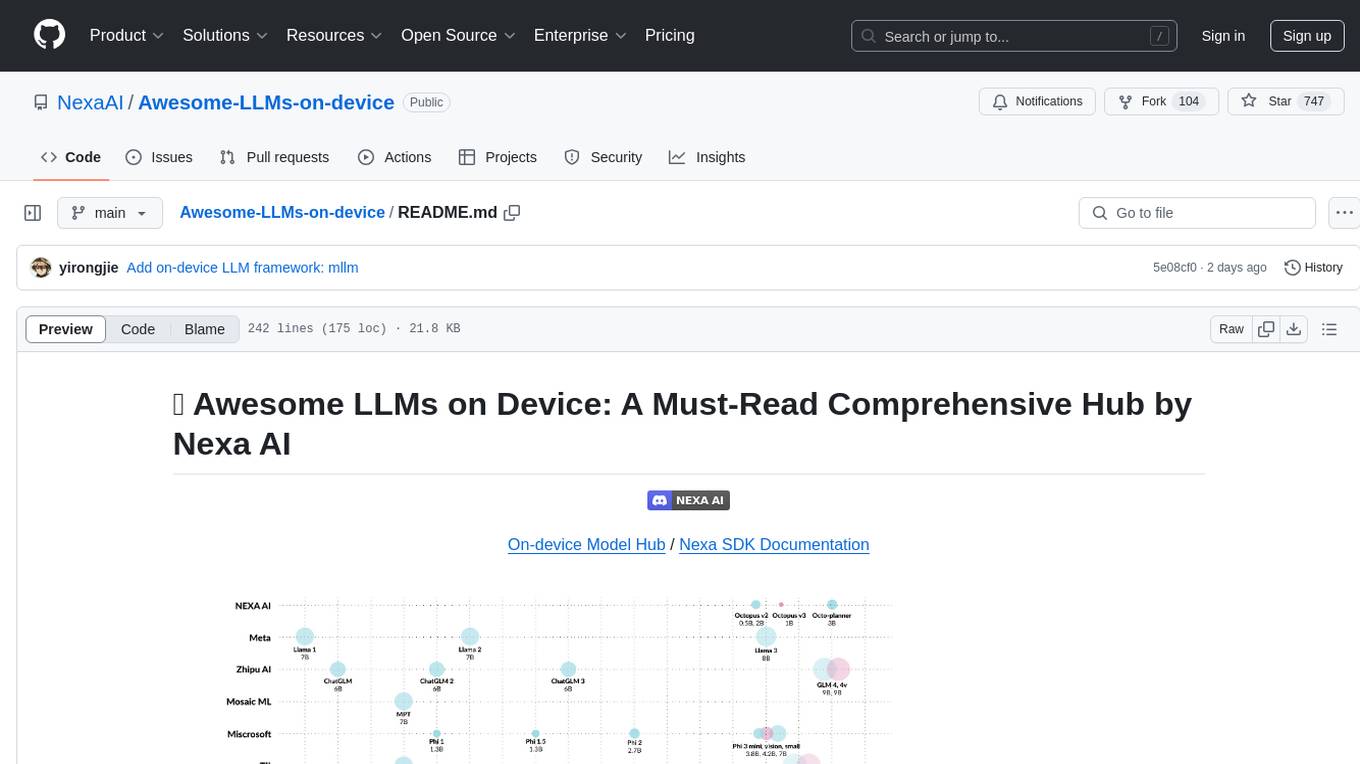
Awesome-LLMs-on-device
Welcome to the ultimate hub for on-device Large Language Models (LLMs)! This repository is your go-to resource for all things related to LLMs designed for on-device deployment. Whether you're a seasoned researcher, an innovative developer, or an enthusiastic learner, this comprehensive collection of cutting-edge knowledge is your gateway to understanding, leveraging, and contributing to the exciting world of on-device LLMs.
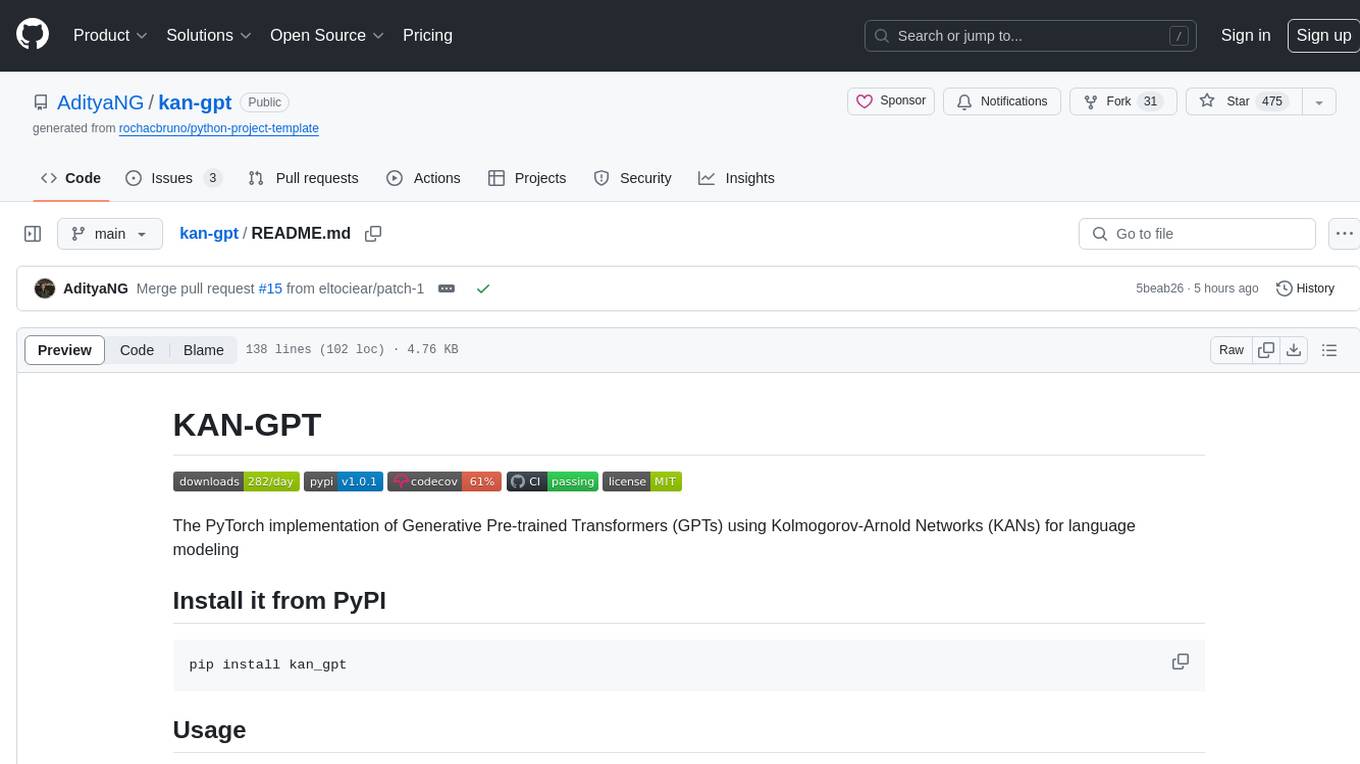
kan-gpt
The KAN-GPT repository is a PyTorch implementation of Generative Pre-trained Transformers (GPTs) using Kolmogorov-Arnold Networks (KANs) for language modeling. It provides a model for generating text based on prompts, with a focus on improving performance compared to traditional MLP-GPT models. The repository includes scripts for training the model, downloading datasets, and evaluating model performance. Development tasks include integrating with other libraries, testing, and documentation.
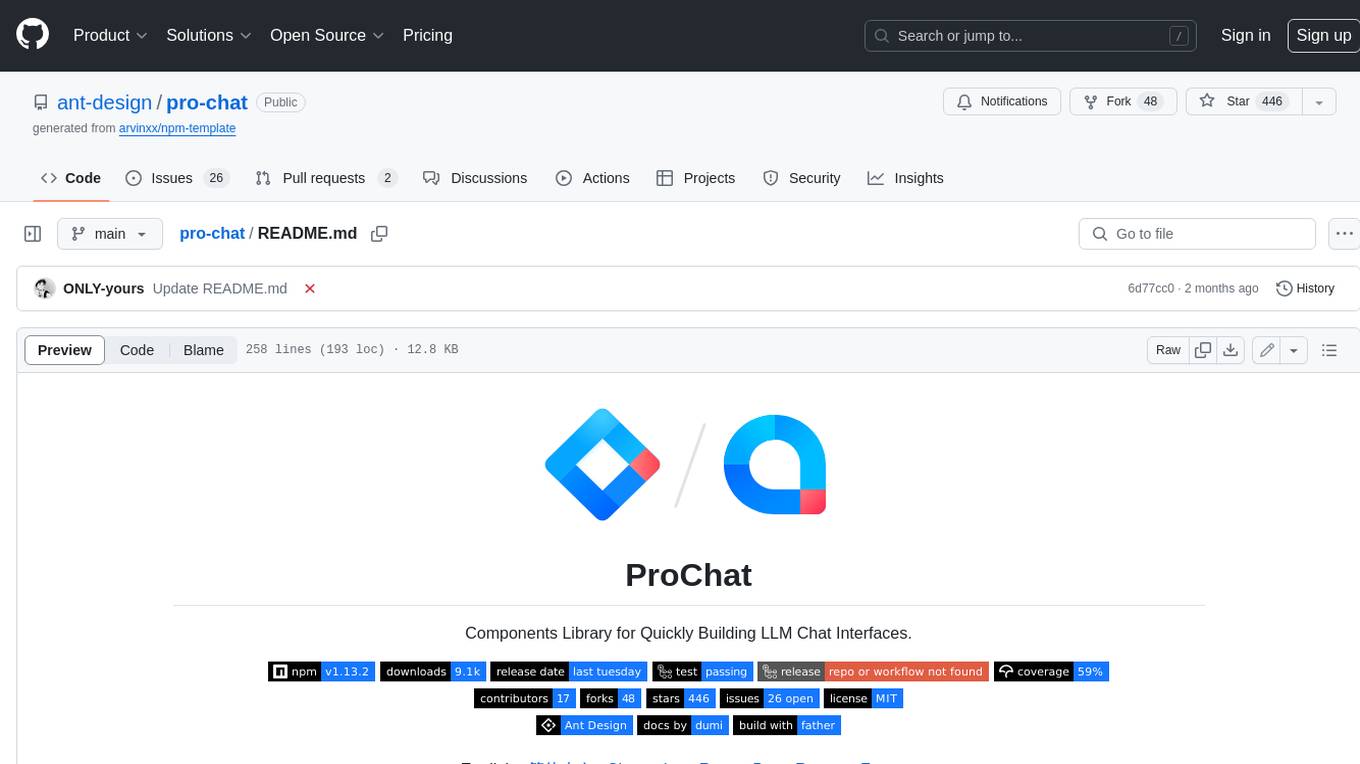
pro-chat
ProChat is a components library focused on quickly building large language model chat interfaces. It empowers developers to create rich, dynamic, and intuitive chat interfaces with features like automatic chat caching, streamlined conversations, message editing tools, auto-rendered Markdown, and programmatic controls. The tool also includes design evolution plans such as customized dialogue rendering, enhanced request parameters, personalized error handling, expanded documentation, and atomic component design.
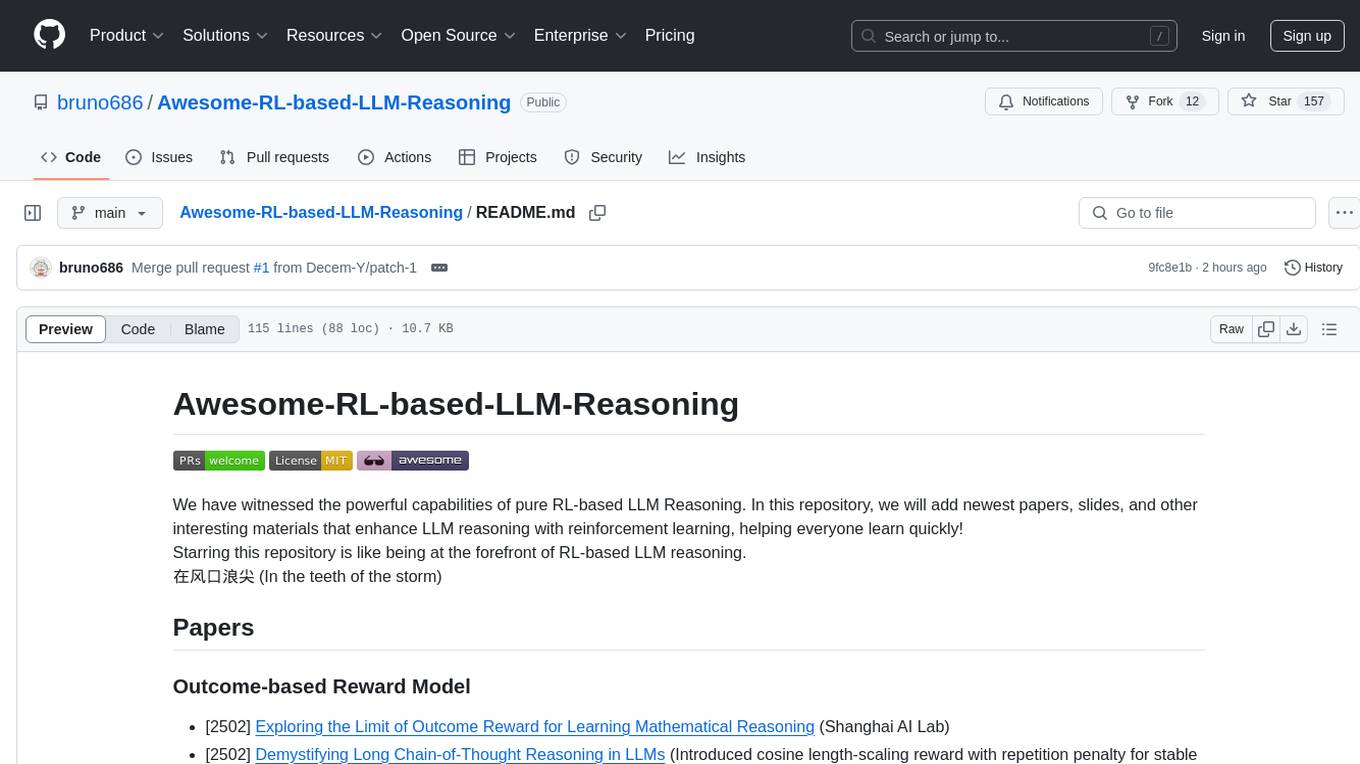
Awesome-RL-based-LLM-Reasoning
This repository is dedicated to enhancing Language Model (LLM) reasoning with reinforcement learning (RL). It includes a collection of the latest papers, slides, and materials related to RL-based LLM reasoning, aiming to facilitate quick learning and understanding in this field. Starring this repository allows users to stay updated and engaged with the forefront of RL-based LLM reasoning.
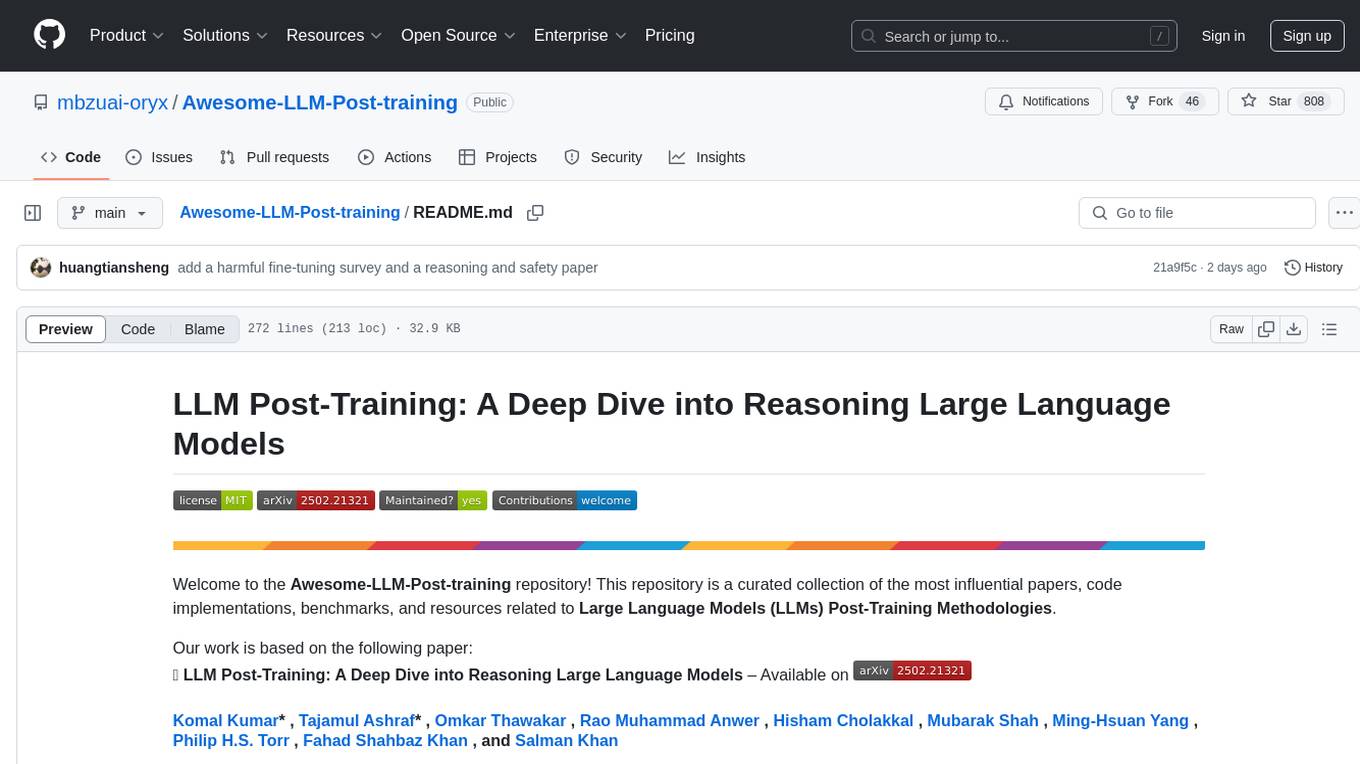
Awesome-LLM-Post-training
The Awesome-LLM-Post-training repository is a curated collection of influential papers, code implementations, benchmarks, and resources related to Large Language Models (LLMs) Post-Training Methodologies. It covers various aspects of LLMs, including reasoning, decision-making, reinforcement learning, reward learning, policy optimization, explainability, multimodal agents, benchmarks, tutorials, libraries, and implementations. The repository aims to provide a comprehensive overview and resources for researchers and practitioners interested in advancing LLM technologies.
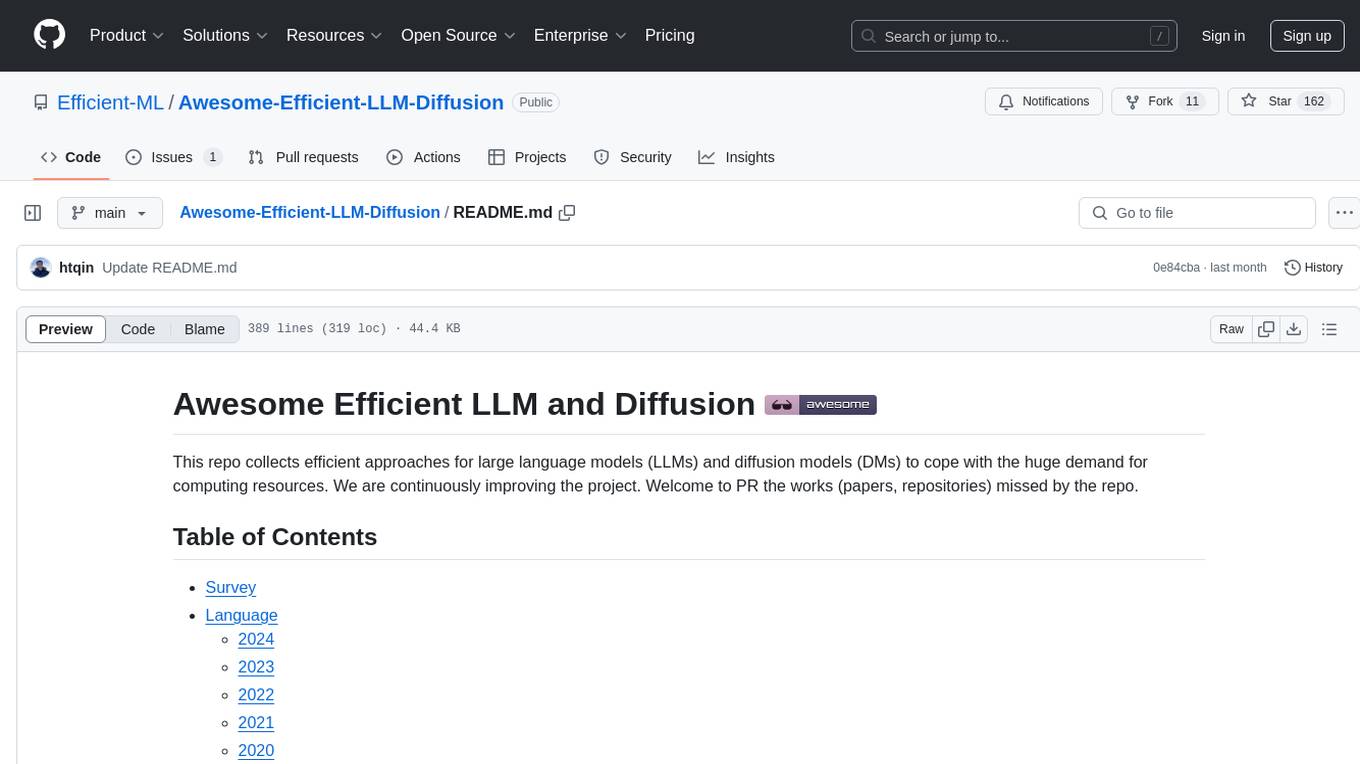
Awesome-Efficient-AIGC
This repository, Awesome Efficient AIGC, collects efficient approaches for AI-generated content (AIGC) to cope with its huge demand for computing resources. It includes efficient Large Language Models (LLMs), Diffusion Models (DMs), and more. The repository is continuously improving and welcomes contributions of works like papers and repositories that are missed by the collection.
For similar tasks

awesome-llm-security
Awesome LLM Security is a curated collection of tools, documents, and projects related to Large Language Model (LLM) security. It covers various aspects of LLM security including white-box, black-box, and backdoor attacks, defense mechanisms, platform security, and surveys. The repository provides resources for researchers and practitioners interested in understanding and safeguarding LLMs against adversarial attacks. It also includes a list of tools specifically designed for testing and enhancing LLM security.
For similar jobs

weave
Weave is a toolkit for developing Generative AI applications, built by Weights & Biases. With Weave, you can log and debug language model inputs, outputs, and traces; build rigorous, apples-to-apples evaluations for language model use cases; and organize all the information generated across the LLM workflow, from experimentation to evaluations to production. Weave aims to bring rigor, best-practices, and composability to the inherently experimental process of developing Generative AI software, without introducing cognitive overhead.

LLMStack
LLMStack is a no-code platform for building generative AI agents, workflows, and chatbots. It allows users to connect their own data, internal tools, and GPT-powered models without any coding experience. LLMStack can be deployed to the cloud or on-premise and can be accessed via HTTP API or triggered from Slack or Discord.

VisionCraft
The VisionCraft API is a free API for using over 100 different AI models. From images to sound.

kaito
Kaito is an operator that automates the AI/ML inference model deployment in a Kubernetes cluster. It manages large model files using container images, avoids tuning deployment parameters to fit GPU hardware by providing preset configurations, auto-provisions GPU nodes based on model requirements, and hosts large model images in the public Microsoft Container Registry (MCR) if the license allows. Using Kaito, the workflow of onboarding large AI inference models in Kubernetes is largely simplified.

PyRIT
PyRIT is an open access automation framework designed to empower security professionals and ML engineers to red team foundation models and their applications. It automates AI Red Teaming tasks to allow operators to focus on more complicated and time-consuming tasks and can also identify security harms such as misuse (e.g., malware generation, jailbreaking), and privacy harms (e.g., identity theft). The goal is to allow researchers to have a baseline of how well their model and entire inference pipeline is doing against different harm categories and to be able to compare that baseline to future iterations of their model. This allows them to have empirical data on how well their model is doing today, and detect any degradation of performance based on future improvements.

tabby
Tabby is a self-hosted AI coding assistant, offering an open-source and on-premises alternative to GitHub Copilot. It boasts several key features: * Self-contained, with no need for a DBMS or cloud service. * OpenAPI interface, easy to integrate with existing infrastructure (e.g Cloud IDE). * Supports consumer-grade GPUs.

spear
SPEAR (Simulator for Photorealistic Embodied AI Research) is a powerful tool for training embodied agents. It features 300 unique virtual indoor environments with 2,566 unique rooms and 17,234 unique objects that can be manipulated individually. Each environment is designed by a professional artist and features detailed geometry, photorealistic materials, and a unique floor plan and object layout. SPEAR is implemented as Unreal Engine assets and provides an OpenAI Gym interface for interacting with the environments via Python.

Magick
Magick is a groundbreaking visual AIDE (Artificial Intelligence Development Environment) for no-code data pipelines and multimodal agents. Magick can connect to other services and comes with nodes and templates well-suited for intelligent agents, chatbots, complex reasoning systems and realistic characters.










